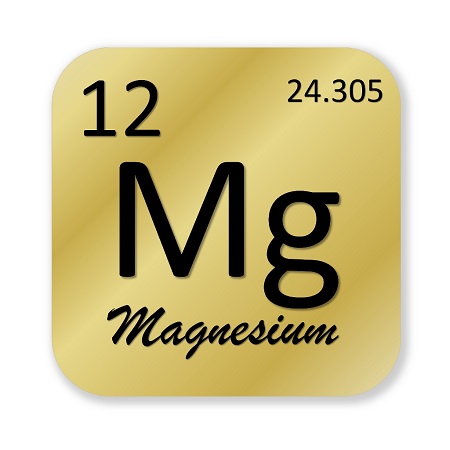
All living things need magnesium to sustain life, from the smallest single-celled organisms to the largest creatures on land or on sea. Plants are no exception. Magnesium activates more than 300 known enzymes in plant cells, and it is essential for meeting the energy demands of the plant. Magnesium is required for both photosynthesis and cellular metabolism. Magnesium is the central element in chlorophyll, without which plants could not perform photosynthesis. Photosynthesis drives plant growth, converting useable light energy into stored energy in the form of sugars. Magnesium also activates key enzymes in cellular respiration, allowing plants to burn the sugars they produced through photosynthesis. So, magnesium is critical for both storing and releasing energy for optimal plant growth. Read this article for more information on how photosynthesis works in plants.
During periods of rapid growth or heavy fruiting and flowering, plants require more energy. That’s why fertilizers containing phosphorus, potassium and magnesium are recommended for growing high-quality fruits and vegetables. All three minerals- P, K, and Mg- contribute to the production, transport, and utilization of sugars within the plant. In addition, magnesium is essential to the function of an energy molecule called ATP (adenosine triphosphate). ATP is often referred to as the “energy currency” of the cell since energy is temporarily stored in its phosphate bonds when it’s produced and released from its phosphate bonds when it’s broken down. Phosphate molecules are often transferred in the process, energizing the next series of chemical reactions in the plant cell. Without magnesium, however, the energy of ATP would be useless. Magnesium-containing enzymes orient the ATP molecules so that the phosphate bonds can be cleaved. Magnesium is so important to energy transfer that biologists often refer to ATP as Mg-ATP since magnesium activates the ATP molecule.
If you want to super-charge your indoor garden, adequate magnesium is essential. Indoor gardeners often use powerful HID grow lamps such as metal halide or high-pressure sodium. As the plants grow closer to the lamps, the light becomes more intense, and the plants need more magnesium to efficiently utilize the light energy. That’s why the symptoms of magnesium deficiency are often more obvious in gardens that have more intense light. If there is inadequate magnesium, plants will begin to remove magnesium from the lower leaves and transport it to the upper leaves where it’s needed the most. Even when the lights are turned off, plants need magnesium to activate the chemical reactions necessary for accelerated plant growth, especially during heavy fruit and flower production.
Magnesium supplements are also beneficial during the final stages of fruit and flower development. In addition to potassium, magnesium is required for the loading and transfer of sugars within the plant for storage in the fruits. So, if you want to grow sweeter fruits and vegetables, magnesium will help. Magnesium sulfate is a clean source of water-soluble magnesium but if you want even better results, try combining B-vitamins with a magnesium-sulfate carrier. B-vitamin derivatives are co-enzymes for critical stages of plant-cell metabolism, so the combination of B-vitamins and water-soluble magnesium could be just the trick for super-charging your garden.
Related Articles & Free Email Newsletter Sign Up
3 Things You Need to Know when Buying a Prepared Nutrient Solution Formulation
Phosphorus is Needed by Plants But Too Much Hurts More Than it Helps
The Benefits of Using Organic Fertilizer & Soil Amendments



Comment here